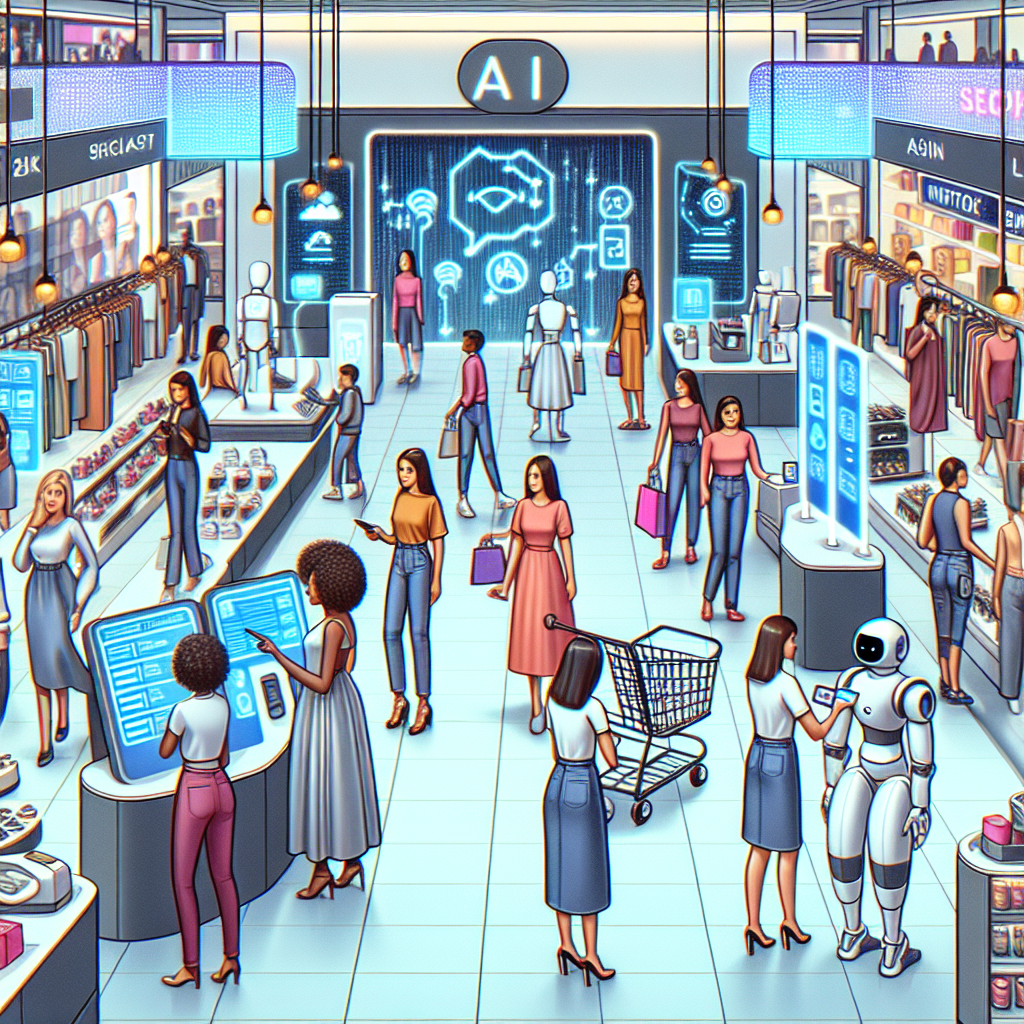Artificial intelligence (AI) is revolutionizing the retail experience in unprecedented ways, transforming the way consumers shop and businesses operate. From personalized recommendations to virtual try-on experiences, AI is reshaping the retail industry by providing innovative solutions that enhance customer engagement, streamline operations, and drive sales.
One of the most significant ways AI is revolutionizing the retail experience is through personalized recommendations. AI-powered algorithms can analyze customer data, such as browsing history, purchase behavior, and demographic information, to provide tailored product recommendations to each individual shopper. This personalized approach not only improves the customer experience by helping shoppers discover products they are likely to be interested in but also increases sales by driving conversions and cross-selling opportunities.
For example, online retail giant Amazon uses AI to recommend products to customers based on their browsing and purchase history. By analyzing a customer’s past interactions with the site, such as items they have viewed, added to their cart, or purchased, AI algorithms can predict their preferences and suggest relevant products that are likely to appeal to them. This personalized approach has been incredibly successful for Amazon, contributing to its high conversion rates and customer loyalty.
AI is also revolutionizing the retail experience by enabling virtual try-on experiences. With the rise of e-commerce, many consumers prefer to shop online rather than in-store, but one of the challenges of online shopping is not being able to try on products before making a purchase. AI-powered virtual try-on tools address this issue by allowing customers to see how products will look on them virtually, using augmented reality (AR) technology.
For example, beauty retailer Sephora offers a Virtual Artist tool that enables customers to try on makeup products virtually using their smartphone or computer camera. By analyzing the customer’s facial features and skin tone, the AI-powered tool can overlay different makeup products onto their face, allowing them to see how the products will look in real life. This virtual try-on experience not only helps customers make more informed purchasing decisions but also enhances their overall shopping experience by providing a fun and interactive way to explore new products.
In addition to personalized recommendations and virtual try-on experiences, AI is also revolutionizing the retail experience by improving customer service through chatbots and virtual assistants. AI-powered chatbots can provide instant responses to customer inquiries, assist with product recommendations, and even process orders, all without the need for human intervention. This not only reduces the burden on customer service representatives but also provides customers with a more convenient and efficient way to interact with brands.
For example, clothing retailer H&M uses an AI-powered chatbot on its website and social media channels to assist customers with product recommendations, sizing queries, and order tracking. The chatbot can understand natural language queries and provide relevant responses in real-time, enabling customers to get the information they need quickly and easily. This seamless customer service experience helps build brand loyalty and drive repeat purchases.
AI is also revolutionizing the retail experience by optimizing inventory management and supply chain operations. AI-powered algorithms can analyze historical sales data, market trends, and external factors such as weather patterns to predict demand for products accurately. This enables retailers to optimize their inventory levels, reduce stockouts and overstock situations, and improve overall supply chain efficiency.
For example, Walmart uses AI algorithms to analyze sales data and predict demand for products at each of its stores. By accurately forecasting demand and adjusting inventory levels accordingly, Walmart can ensure that products are always in stock when customers need them, leading to increased sales and customer satisfaction. This data-driven approach to inventory management has helped Walmart reduce costs and improve operational efficiency across its vast network of stores.
Overall, AI is revolutionizing the retail experience by providing innovative solutions that enhance customer engagement, streamline operations, and drive sales. From personalized recommendations to virtual try-on experiences, AI-powered tools are transforming the way consumers shop and businesses operate in the retail industry. As AI continues to advance, retailers will need to embrace these technologies to stay competitive in today’s fast-paced and evolving market.
FAQs:
Q: How is AI being used in retail?
A: AI is being used in retail in various ways, such as providing personalized recommendations, enabling virtual try-on experiences, improving customer service through chatbots, and optimizing inventory management and supply chain operations.
Q: What are the benefits of AI in retail?
A: The benefits of AI in retail include enhanced customer engagement, increased sales, improved operational efficiency, and streamlined processes. AI-powered tools can help retailers better understand their customers, provide personalized shopping experiences, and optimize their operations to drive growth and profitability.
Q: How can retailers implement AI in their business?
A: Retailers can implement AI in their business by investing in AI-powered tools and technologies, such as recommendation engines, virtual try-on platforms, chatbots, and inventory management systems. It is essential for retailers to assess their specific needs and goals and choose AI solutions that align with their business objectives to maximize the benefits of these technologies.

